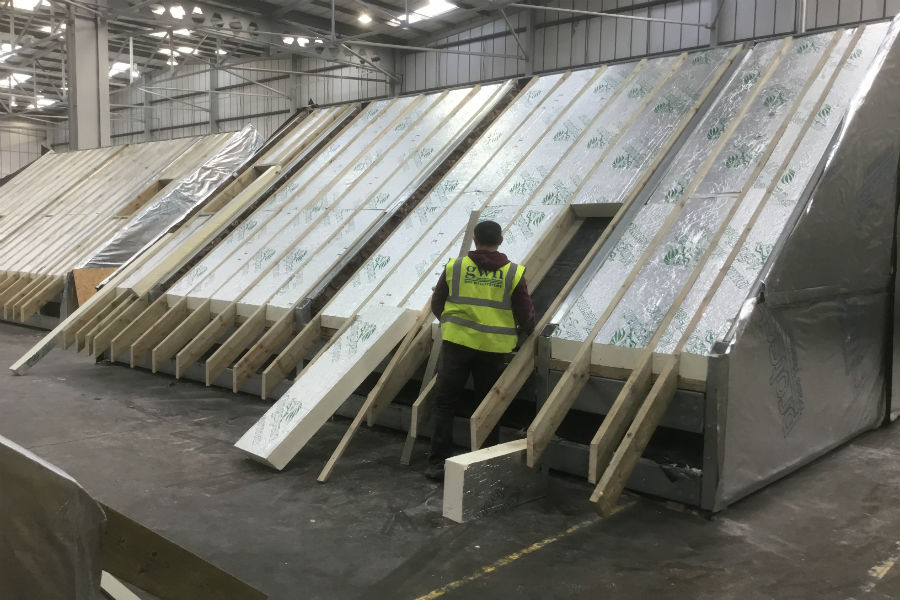
21 Nov Budget 2017: Cross party politicians request more investment in Offsite house building.
A group of cross-party London Politicians have written to the Chancellor Phillip Hammond to commit to significant investment in this week’s Budget to help develop Off-site manufacturing.
In the letter from the collaborative London Assembly group including representatives from the Conservatives, Labour, the Green Party and the Liberal Democrat’s, there is a stark message saying, “we can no longer tiptoe around the periphery of the UK’s housing crisis” quoting last year’s construction industry review commissioned by DCLG which bluntly concluded that the sector including house building must “modernise or die”.
The letter refers to the assembly’s own report published in August 2017, “Designed, sealed, delivered; The contribution of offsite manufactured homes to solving London’s housing crisis” highlighting the huge advantages of using offsite manufacturing (OSM).
The letter goes on to talk about the skills shortages that currently exists in traditional construction and a requirement for “cutting-edge, digitally-led factory based precision manufacturing which will produce an economic boost-including jobs and training around the whole country”
They conclude by detailing five key principals why funding should be committed to support OSM for housing:
1.Consistency and innovation: New technology allows for consistent quality, better energy efficiency and more sustainable use of materials.
A controlled offsite environment, where digitally-led precision manufacture techniques are being pioneered, can create homes whose quality has the potential to outstrip traditional methods. Producing homes offsite in factories – and then assembling them onsite – paves the way to use all manner of new materials, ensuring our homes are as energy efficient as possible, while minimising carbon emissions from the construction process by centralising much of the labour-intensive construction outside congested areas.
2. The need for speed: The problem needs fixing now. OSM can build homes far quicker than traditional methods.
The housing crisis is nationwide, yet it is at its most pronounced in our cities, particularly London, which needs houses and it needs them fast. OSM accelerates the rate of home delivery, bridging the gap between growing housing demand and the current capacity in the traditional construction sector. The widespread adoption of OSM is crucial for achieving London’s recently reviewed 66,000 homes per year target.
3. We need a realistic response to the skills crisis that encourages adoption of new technology.
Pump-priming the sector would spur the innovation and research and development that we must support Construction needs to be brought into the 21st century by using modern technology. OSM relies on digitalised processes, 3D printing, automation and robotics. Not only will a robust OSM sector alleviate the traditional skills shortage – highlighted by the majority of professionals and industry experts, but it will provide the demand basis for creating new jobs and reskilling the existing workforce. This demand will serve far more than the housebuilding industry and can help underpin broader ambitions that you have rightly begun to set out around supporting R&D across industry.
4. Attracting younger workers to construction
As much as automation and new technology is required, so too is attracting younger people into the construction industry. A quarter of London’s construction workforce is currently from the European Union, leaving the sector exposed to a skills crisis postBrexit. OSM can attract the younger generation to digitalised career paths, minimising the industry’s reliance on imported skills and giving us a further opportunity to upskill workers at home to build the homes that are so desperately required. This is a win-win for everyone.
5. Driving collaboration to make the sector less fragmented
OSM drives innovation and collaboration which is something the construction industry desperately needs. In a fragmented construction sector, actors are unable to collaborate in achieving targets on time and in budget. New technologies that are embedded in OSM drive further cross-sector collaboration and integrated supply chains as we see in automotive and aerospace industries, reducing delivery inefficiencies that hold back the construction process.
We will find out in 24 hours if the Chancellor has taken this request seriously.
by Michael Low | Partner



Sorry, the comment form is closed at this time.